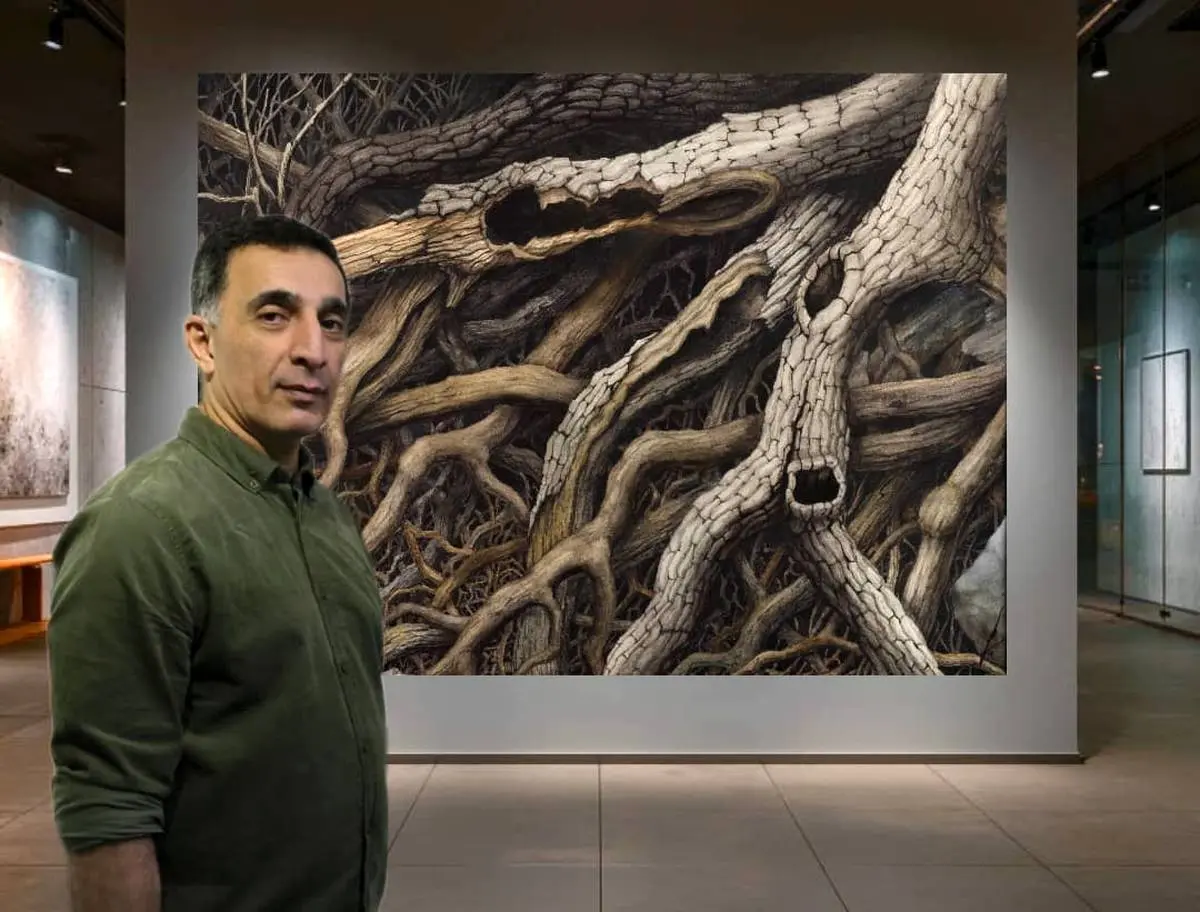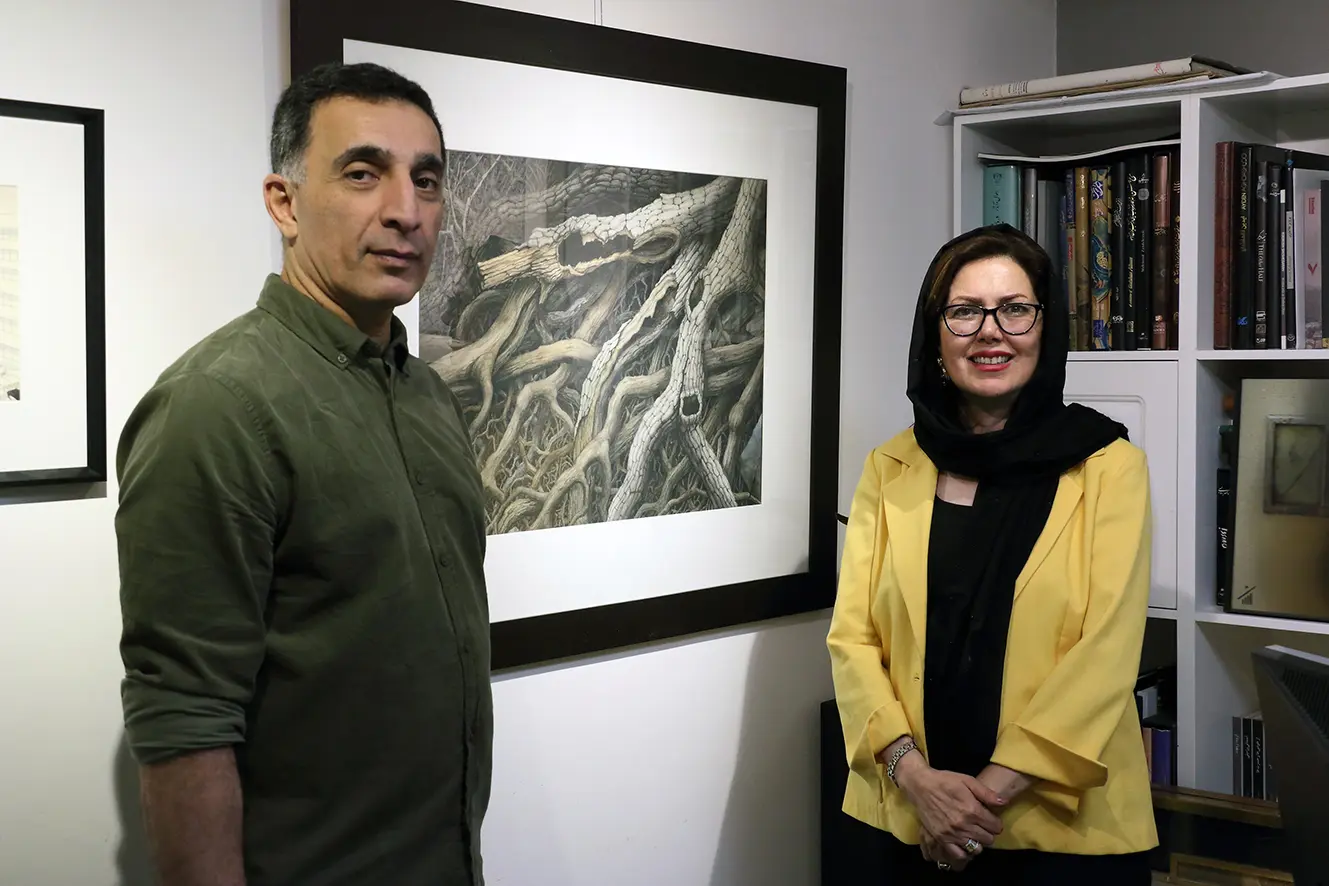
Aref Geranmayeh and Contemporary Watercolors at Mojdeh Gallery
Aref Geranmayeh’s watercolor is not merely a depiction of roots and deadwood; it is a manifesto on the cycle of time, nature’s memory, and the secret life that pulsates within silence.
ArtDayMe : Born in 1966 in Tehran, Aref Geranmayeh has long been recognized for his mastery of watercolor painting and his distinct perspective on nature—especially tree roots and the often-overlooked structures of plant life. Nearly seven years ago, in February 2019, Geranmayeh presented a solo exhibition at Mojdeh Gallery. Those roots, wooden forms, and rarely seen corners of still life—rendered with exceptional watercolor technique—became his artistic signature.
Since then, each time a single work by Geranmayeh has appeared at Mojdeh Gallery, his honed gaze upon pristine, even harsh, landscapes—at a time when the plight of the environment is more distressing than ever—has drawn significant attention.
On the occasion of the presentation of two works by Aref Geranmayeh in Mojdeh Gallery’s exhibition “Crowd,” we examine one piece from his “Roots” series, created in 2018 in watercolor on paper, measuring 53 × 73 cm:

watercolor takes the viewer on a journey into the depths of nature’s silence—where intertwined trunks and roots recount a hidden history and a muted existence. Rather than turning to vivid and striking colors, the artist restricts his palette to browns, grays, and darkened hues, guiding the viewer toward texture and the subtle erosion of time.
Here, a twisting network of decayed, perforated wood appears like living organs. The visual structure is built upon repetitive, irregular forms that lend a fluid rhythm to the image. Amid visual density, a delicate balance prevails, as though invisible forces hold this organic chaos within an inner order. Atmospheric depth is achieved through the layered placement of branches against a darkened background, inviting the viewer to wander within the textures.
Textural rendering is the backbone of this work. With remarkable watercolor mastery, Geranmayeh narrates the cracked, worn, and split surfaces of wood with such precision that one can almost feel the coarse dryness beneath the fingertips. Controlled chiaroscuro lifts the forms from flatness, granting them tangible volume. From this viewpoint, the work stands as a brilliant testament to the artist’s command of a medium inherently gentle, yet here conscripted to depict the most abrasive and eroded surfaces.

Though the visual language is rooted in realism, mouth-like cavities and humanoid branches usher the piece into the realm of imagination. This anthropomorphic quality, combined with the entanglement of roots, lends the work a lyrical, enigmatic atmosphere—where nature becomes a sentient being, keeper of memory. These dead or dying trees are no longer mere natural elements; they are bearers of history—memories of cycles of birth and death, of silence and unspoken cries.
Conceptually, the work oscillates between the dualities of “life and death” and “decay and continuity.” The roots symbolize hidden bonds and deep biological networks, while the hollow, mouth-like voids suggest absence, erasure, or unresolved longing. The constricted twisting of forms evokes feelings of entrapment, intertwined destinies, or even shared wounds of existence. This silent narrative constructs a frame steeped in dense quietude and restrained sorrow.
The symbolic language of the work is not easily deciphered at first glance. The tree—an emblem of life and growth—assumes a reversed role here: a symbol of decline, wounded memory, and weary bodies. Yet amid the cracks and darkness, a muted hope persists—hinting at a force that endures even in disintegration.
Aesthetically, the painting is grounded in meticulous detail and the brilliance of line, while simultaneously harboring a creeping poetics that transports the viewer beyond tangible reality into a more cerebral place. What distinguishes the work is the artist’s ability to transform seemingly simple, eroded elements into a realm rich in mystery and discovery.

Geranmayeh’s watercolor is not just an image of roots and deadwood; it is a declaration about the passage of time, nature’s memory, and the hidden vitality that beats within stillness. This work invites the viewer to contemplate the threshold between presence and absence, body and memory, nature and humanity—and this multilayered quality renders it a lasting experience within our visual memory.

LEAVE A RELPY